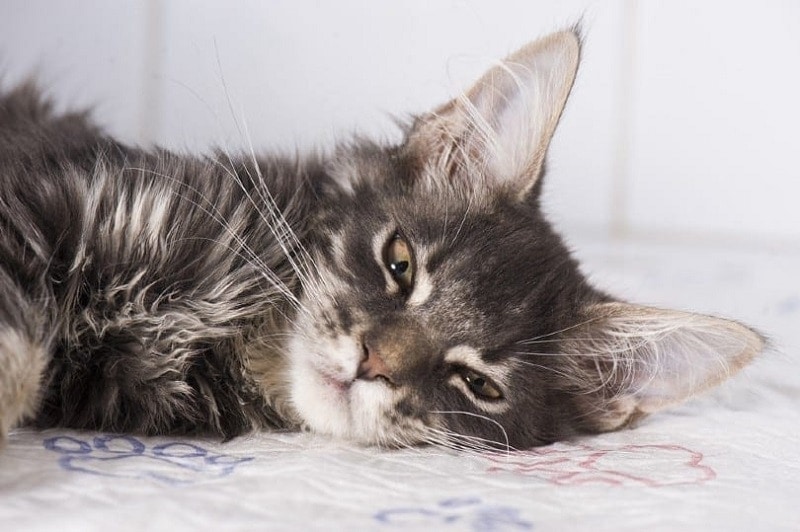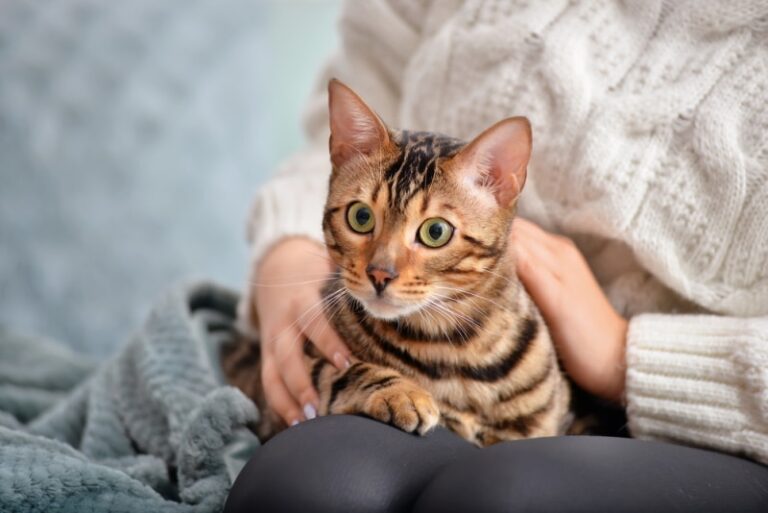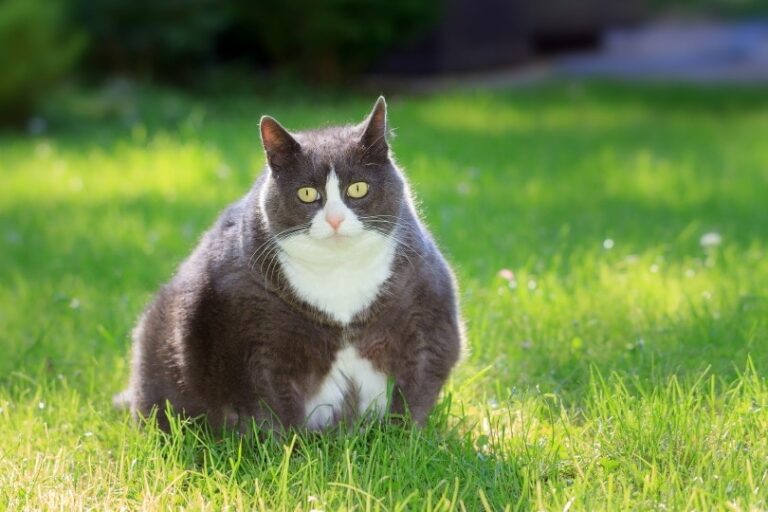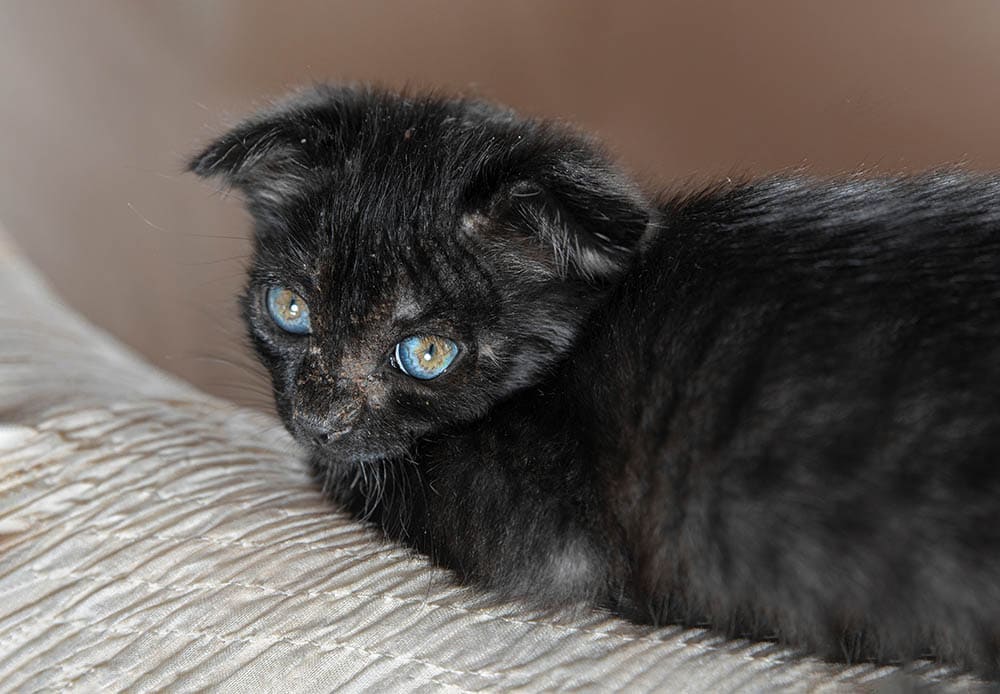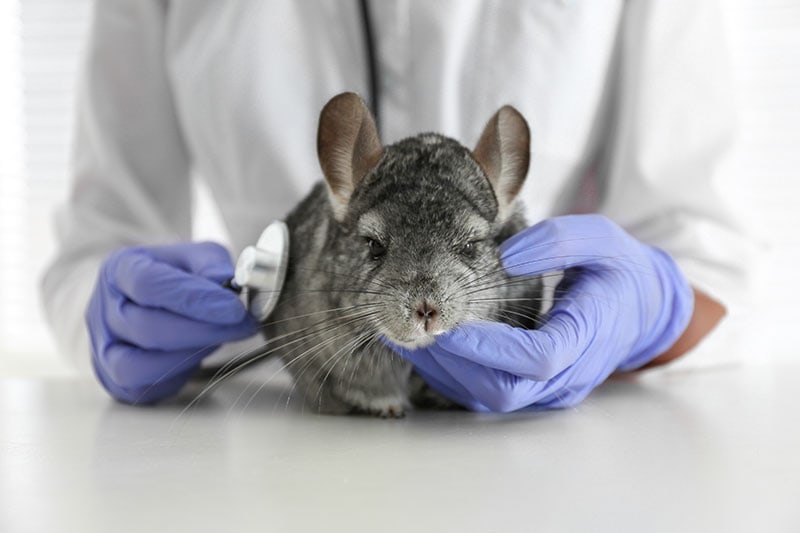VET APPROVED

The information is current and up-to-date in accordance with the latest veterinarian research.
Learn more »Click to Skip Ahead
Several illnesses can affect a cat, but fluid in or around their lungs is one of the more concerning. Cats are excellent at hiding signs of illness, and fluid in their chest is a common illness that is only diagnosed once a cat has been to see their vet.
However, there are several signs that you can watch for at home that might indicate the issue is occurring. We will explore the signs, how the condition occurs, and the care involved for your furry friend if it does. Read on to learn more.

How Does Fluid in the Lungs Happen?
The first step to understanding how fluid in the lungs happens is to understand the anatomy of the lungs. The lungs are located in the thoracic or chest cavity; they introduce oxygen into the bloodstream and help balance the body’s pH. They also have vital roles in being a sentinel for the immune system. The lungs are divided into the left and right sides. In cats, the lungs are not entirely symmetrical, with an accessory lung lobe on the right side.
Fluid can build up in two places in the chest: within the lungs themselves (edema) or around the lungs—between the lung tissue and the chest wall (effusion). Lung or pulmonary edema can occur for a variety of reasons, including pneumonia from bacteria or viruses, parasitic infections, cancer, trauma, heart failure or other cardiac disease, and electrical shock.
Edema can be troublesome because it decreases the lungs’ capacity to oxygenate the blood by decreasing the volume of working lung tissue. The functional units of the lungs are called alveoli. Once they are filled with fluid, they cannot work to exchange carbon dioxide and oxygen, and the lung function becomes impaired.
Thoracic effusions can occur from lymphatic blockages, cardiac (heart) disease, cancer, infections, and other causes. Thoracic effusions decrease the ability of the lungs to expand. This can involve one or both sides of the chest. When severe, lung expansion can be quite compromised, and again, difficulty in oxygenating the blood can be marked.
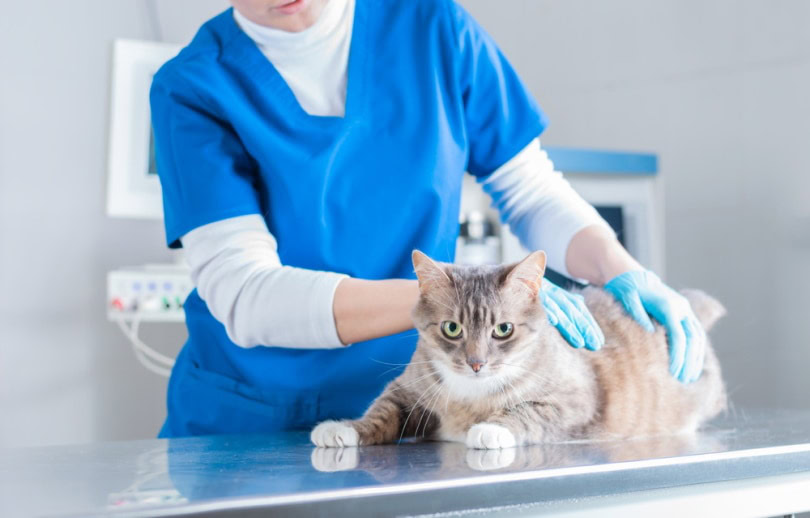
What Are the Symptoms of Fluid in a Cat’s Lungs?
Fluid in cats’ lungs may cause various signs, depending on how much fluid is present, how long it has been present, how active the cat is, what the underlying cause is, and whether other health concerns exist.
The signs can include:
- Lethargy
- Weakness
- Fast or heavy breathing
- Open mouth breathing
- Pale gums and mucus membranes
- Exercise intolerance
- Fast heart rates
- Difficulty in breathing
- Loss of appetite
- Hiding
- Fever
How Can You Care for a Cat with Fluid in Their Lungs?
Fluid in a cat’s lungs or chest requires a medical diagnosis to determine the best course of action. Your cat needs to see the vet, who often performs imaging, such as an ultrasound or X-rays, to identify the fluid’s cause. Sometimes, labwork is also performed.
In severe cases, the treatment will involve hospitalization and may include IV fluids, oxygen therapy, diuretics, antibiotics, and pain relievers, amongst others. Some cats may be able to go home with medications, provided they are stable enough to do so.
Caring for a cat with fluid in their lungs involves following the treatment protocol your vet outlined. This includes adhering to the timing of their medications, minimizing stress, monitoring their eating habits and bathroom habits, and ensuring that your cat is responding to treatment. You may also be asked to count your cat’s resting respiration rates, which, in general, should be less than 30 breaths per minute when they are at rest or asleep and not purring.
Traveling with your cat, allowing them outside, and introducing stressors, such as new people, would be less than ideal. Caring for your cat if they have fluid in their lungs involves quiet, restful environments, appropriate food and medications, and as much attention as they desire.

Frequently Asked Questions (FAQs)
What Are the Outcomes for Cats With Fluid in Their Lungs?
Cats can completely recover from fluid buildup in their lungs, depending on the underlying cause. Cats can also go for a long time before this fluid is discovered, since many live relatively sedentary lifestyles. Conversely, this means that the symptoms can, therefore, be difficult to detect as well, and cats may live for weeks or months with fluid in their lungs before it is detected.
What Are Some Diseases That Can Cause Fluid in a Cat’s Lungs?
Several diseases can cause fluid buildup in a cat’s lungs. It is also important to note that this is different than fluid around a cat’s lungs, which is called pleural effusion. Fluid in the lungs, referred to as pulmonary edema, can be caused by the following:

Conclusion
Fluid in cats’ lungs, whether in the lungs themselves or the chest cavity, is always a serious concern. Because the causes are varied and because a definitive diagnosis is generally not possible without imaging and/or labwork, any suspicion of fluid in your cat’s lungs should involve a trip to your cat’s veterinarian. However, if your cat is severely ill, it is important that you call ahead of time to get recommendations about how best to transport your cat to reduce travel stress and safely get your cat into the clinic. Sometimes, a stable cat can quickly become far worse with the stress of travel when leaving home.
The best way to prevent severe illness in cats is to be highly attuned to their normal behaviors. At the earliest sign of illness, you can detect these changes and get your cat the help they need before an illness becomes too severe.
Featured Image Credit: Kachalkina Veronika, Shutterstock
